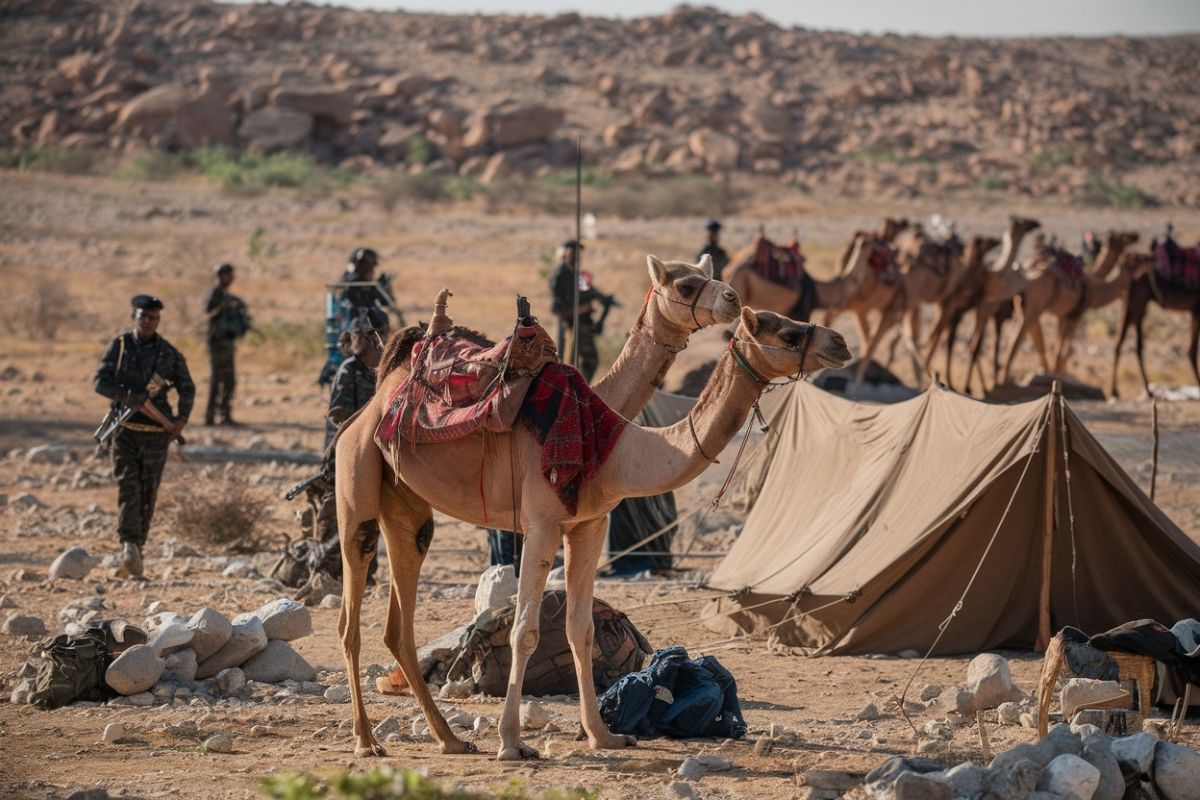
The Shifta War remains a significant yet often overlooked conflict in African history. Fought between 1963 and 1967, this war involved Somali insurgents, known as "Shiftas," who aimed to secede from Kenya and join Somalia. The conflict arose from deep-rooted ethnic tensions and territorial disputes, leaving a lasting impact on the region. Understanding the Shifta War is crucial for grasping the complexities of post-colonial African politics and the enduring struggles for self-determination. This blog post will delve into 30 intriguing facts about the Shifta War, shedding light on its causes, key events, and lasting consequences. Ready to learn more about this pivotal chapter in history? Let's dive in!
Key Takeaways:
- The Shifta War was a conflict in the 1960s between the Kenyan government and Somali insurgents who wanted to join Somalia. It led to displacement, food shortages, and strained international relations.
- The war ended in 1967 after a ceasefire agreement, but its impact lingered. It shaped Kenya's national identity and regional relations, highlighting the challenges of nation-building in post-colonial Africa.
What Was the Shifta War?
The Shifta War was a conflict in the 1960s that took place in the Northern Frontier District (NFD) of Kenya. It involved the Kenyan government and ethnic Somali insurgents who wanted to join Somalia.
- The Shifta War began in 1963, shortly after Kenya gained independence from Britain.
- The term "Shifta" means "bandit" in Somali, used by the Kenyan government to describe the insurgents.
- The conflict was fueled by the desire of ethnic Somalis in the NFD to secede and join Somalia.
- Somalia supported the insurgents, providing them with weapons and training.
- The war lasted until 1967, though sporadic violence continued afterward.
Key Players in the Shifta War
Several groups and nations played significant roles in the Shifta War. Understanding these key players helps to grasp the complexity of the conflict.
- The Kenyan government, led by President Jomo Kenyatta, aimed to maintain national unity.
- The Northern Frontier District Liberation Movement (NFDLM) was the main insurgent group.
- Somalia's government, under President Aden Abdullah Osman Daar, supported the NFDLM.
- British colonial officers initially tried to mediate but left after Kenya's independence.
- Local tribes and clans were often caught in the crossfire, suffering significant casualties.
Impact on Civilians
The Shifta War had a profound impact on the civilian population in the affected areas. Many faced hardships and displacement.
- Thousands of civilians were displaced, creating a refugee crisis.
- Villages were often targeted, leading to widespread destruction of homes and property.
- The Kenyan government imposed a state of emergency, restricting movement and trade.
- Food shortages became common due to disrupted agricultural activities.
- Many civilians were subjected to violence and human rights abuses by both sides.
Military Tactics and Strategies
Both the Kenyan government and the insurgents employed various military tactics during the Shifta War. These strategies shaped the course of the conflict.
- The Kenyan military used scorched earth tactics, destroying villages to deny insurgents resources.
- Insurgents relied on guerrilla warfare, using hit-and-run tactics against government forces.
- The Kenyan government established "protected villages" to control the population and cut off support to insurgents.
- Aerial bombardments were used by the Kenyan Air Force to target insurgent bases.
- Insurgents used the rugged terrain of the NFD to their advantage, making it difficult for government forces to track them.
International Reactions and Consequences
The Shifta War drew attention from the international community, influencing regional politics and relations.
- The Organization of African Unity (OAU) called for peaceful resolution and respect for colonial borders.
- The conflict strained relations between Kenya and Somalia, leading to a severance of diplomatic ties.
- The United States and the Soviet Union, engaged in the Cold War, monitored the conflict but did not intervene directly.
- The war highlighted the challenges of nation-building in post-colonial Africa.
- The conflict contributed to the ongoing instability in the Horn of Africa region.
End of the Shifta War
The Shifta War officially ended in 1967, but its effects lingered for years. The resolution involved several key developments.
- A ceasefire agreement was signed in October 1967, brokered by the OAU.
- The Kenyan government granted amnesty to insurgents who surrendered.
- Efforts were made to integrate the NFD into Kenya, including infrastructure development and political representation.
- The conflict left deep scars, with lingering mistrust between the government and the Somali community in Kenya.
- The Shifta War remains a significant chapter in Kenya's history, shaping its national identity and regional relations.
Final Thoughts on the Shifta War
The Shifta War left a lasting impact on the Horn of Africa. This conflict, which lasted from 1963 to 1967, involved Kenya and Somali insurgents. It was driven by territorial disputes and ethnic tensions. The war led to significant loss of life and displacement of people. It also strained relations between Kenya and Somalia for years. Despite the turmoil, the Shifta War highlighted the resilience of the affected communities. They rebuilt their lives and worked towards peace. Understanding this conflict helps us appreciate the complexities of regional politics and the importance of diplomacy. The Shifta War serves as a reminder of the need for peaceful resolutions to conflicts. It also underscores the value of historical knowledge in shaping our future.
Frequently Asked Questions
Was this page helpful?
Our commitment to delivering trustworthy and engaging content is at the heart of what we do. Each fact on our site is contributed by real users like you, bringing a wealth of diverse insights and information. To ensure the highest standards of accuracy and reliability, our dedicated editors meticulously review each submission. This process guarantees that the facts we share are not only fascinating but also credible. Trust in our commitment to quality and authenticity as you explore and learn with us.
